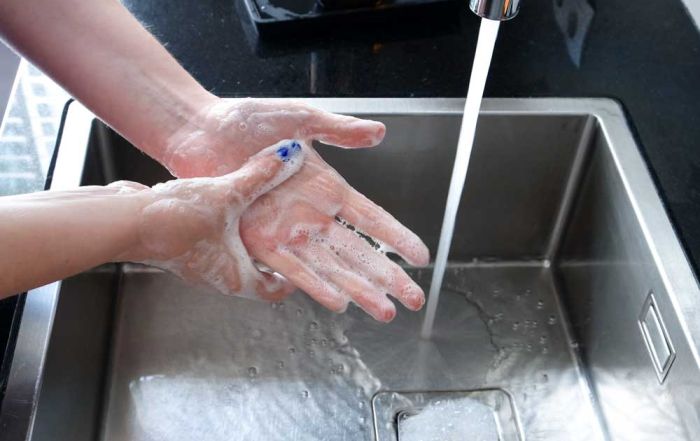Halfway Gone, A Mid-Year Food Safety Check-up for your Foodservice Business
July is often a time when a portion of us in the foodservice business are at our prime. In many areas of the country, we are in the midst of our busiest season of the year. Yet, for those in other foodservice operations it is a slower time of year, where we can spend time refocusing on the busy season ahead. Whatever the case for you, as we cross over the halfway point of 2024, it is an ideal time to conduct a thorough food safety check-up.
As we all know, ensuring food safety isn’t just about meeting regulatory standards, it’s about safeguarding your customers’ health, protecting your reputation, and maintaining operational excellence. So, this is a great time of year to take a step back and conduct a comprehensive inspection and walk through of your entire operation from receiving to service and evaluate areas of concern. While not a comprehensive list, here are some things to pay particular attention to.
- Storage and Stock Rotation:
- Check coolers and freezers to ensure they maintain the correct temperatures for storing perishable items. If you haven’t developed temperature logs to track this daily, now is the time to start doing this – at FoodHandler, we’ve even created a log especially for this and it is available for free on our FoodHandler website. It could help prevent the loss of inventory in the future – and potentially save you lots of money should a cooler or freezer go down this summer.
- Ensure your dry storage room meets your cleanliness standards and is free of evidence of rodents and/or pests.
- Check to ensure your stock rotation practices are being followed by employees to prevent expired or spoiled goods from being used.
- Kitchen Cleaning and Sanitation:
- Assess the cleanliness of the kitchen as a whole. Most foodservice operations do a fairly good job at keeping the daily food preparation areas cleaned, but what about areas we don’t get too every day? The floor areas under standing equipment, the outside of ovens, the exhaust system in the kitchen? Have these been kept up to your standards?
- Schedule a professional pest control inspection to prevent infestations that could compromise food safety.
- While all personal hygiene standards are important, perhaps none more so than handwashing. Reinforce proper handwashing practices among staff and be sure to follow up on this every day.
- Staff Training:
- Verify that all staff members have received adequate training in food handling, hygiene, and safety protocols. If they have not, start planning a training session now, don’t wait.
- Ensure certifications for food safety are up to date for all relevant personnel.
- Supplier Relationships:
- Review the quality assurance measures in place with your suppliers to ensure they meet your food safety standards. Be sure to discuss this with the individual who receives your food and checks in the orders – they may not be telling you of recent issues they may have noticed.
… this is a great time of the year to take a step back and conduct a comprehensive inspection and walk through your entire operation from receiving to service and evaluate areas of concern.
After you’ve done your inspection, make sure you document what actions you took as a result. While I hope you never have to defend yourself in a food safety lawsuit, the fact is that documenting things now not only helps you keep up with your overall food safety program, but it also could help provide documentation for an affirmative defense in a lawsuit.
As a result of the inspection, you may notice that the policies and procedures you had implemented may not be performing as well as you had hoped. Update these now while the issues are fresh in your mind. Be sure to also note a day to do a follow-up inspection. Depending on what you discovered during this inspection, that may be a week from now, two weeks from now, or two months from now – whenever it is, schedule it in now and stay on top of your food safety program. Remember, consistent monitoring helps maintain high standards and promptly address any emerging issues.
A mid-year food safety check-up can be a solid proactive measure to protect your customers and your business. By investing time and resources into thorough inspections, staff training, and updating policies and procedures, you ensure that your foodservice establishment continues to operate at the highest standards of food safety. Risk Nothing.
READ MORE POSTS
30 Years Later: The Foodborne Illness Outbreak that Changed Food Safety
In January, we hit a major anniversary. One I am betting snuck by many of you – including me! January marked 30 years since the deadly 1993 E. coli O157:H7 outbreak at Jack in the Box restaurants on the west coast. The anniversary wasn’t on any of the major news networks that I recall. It did make it into a few newspapers, at least one or two of the newspapers that are left. It wasn’t until late-February that I realized it.
Does Temperature Really Matter when Washing your Hands?
In January, I reviewed the changes to the 2022 Food Code in my blog (check out Part I and Part II), and one change to the food code that I had mentioned, but didn’t discuss in-depth, was the change that lowered the water temperature a hand sink was required to produce to 85°F, as noted in Section 2-202.12 of the code. This requirement has been in place since the publishing of the 2001 Food Code, which required a water temperature of 100°F. Prior to this, 110°F was required (see the 1999 Food Code). So why the change and does water temperature when washing your hands really matter?
Hand sinks: Often Taken for Granted, but an Essential Part to Effective Hand Hygiene
Late in January, I received a question about hand sinks in a foodservice operation. The question pertained to school staff (teachers and aides) who were using a hand washing sink in the school kitchen. The question came as a matter of who was allowed access to the kitchen to use the sink, but the question itself caused me to go down a rabbit hole of requirements for hand washing sinks in foodservice operations.
Hot off the Press: The 2022 Model Food Code has been Released! Part Two.
Earlier in the month, we started a discussion about the changes to the 2022 Food Code. If you missed that post, late in December 2022, the Food and Drug Administration released the 2022 Food Code and I wanted to highlight a few of the changes that have been made to the code.










